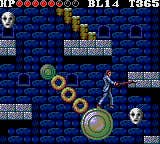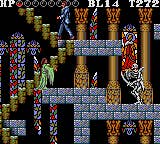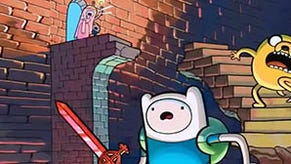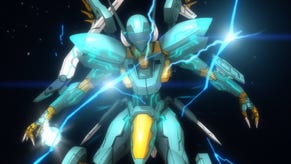Virtual Spotlight: Vampire, Master of Darkness
What's interesting on Virtual Console this week? Sega's bold (if flawed) Castlevania clone.
This article first appeared on USgamer, a partner publication of VG247. Some content, such as this article, has been migrated to VG247 for posterity after USgamer's closure - but it has not been edited or further vetted by the VG247 team.
Virtual Spotlight takes a look at the most interesting (not necessarily the best) weekly release for Nintendo's Virtual Console. We'll also look at PlayStation Network/PS1 classics, on the rare occasion Sony remembers those exist. This week: We ignore the fact that you can play Pilotwings on Wii U now to delve into the realm of the obscure with Sega's Vampire: Master of Darkness.
Console gaming in the late '80s was divided into a weird sort of haves versus have-nots: NES owners versus Master System owners. I say "weird" because traditionally the haves are the one-percenters, but in the NES days they were more like 90-percenters. The remaining 10 percent consisted of a tussle between Sega and whatever scraps Atari's leftovers managed to cling to. The Master System was a pretty great system, truth be told, but its failure to track both at home in Japan and in most countries abroad meant most of the games people cared about ended up on NES.
To their credit, Sega braced up and made lots of interesting original games along with programming some solid ports anyway. The Wonder Boy series, Phantasy Star, Zillion, R-Type; being the runner-up in the console race didn't cause Sega to say, "Eh, maybe next generation." They tried! Still, sometimes the shadow of Nintendo's dominance hung heavy over the Master System, and some of its games inevitably came off as try-hard attempts to clone what was popular on NES.
Which brings us to Vampire: Master of Darkness, a game that simply can't be described without invoking the name "Castlevania." The fact that no review of Vampire has ever not mentioned Castlevania does not denote laziness or lack of imagination by reviewers. It simply reflects reality. Vampire bites off the NES Castlevania games so hard you can see the teethmarks; it makes almost no effort to distinguish itself. Not mentioning the game's naked inspiration would be like reviewing an Oasis album without mentioning the Beatles.



Vampire contains a lot of very familiar elements hastily redrawn to be just different enough to avoid a lawsuit. You control a stiff, slightly awkward man traveling through dark scenes haunted by the undead. You collect sub-weapons (a boomerang, an arcing projectile, a weak but quick projectile, etc.). You climb stairs. You curse at bats that swoop down and knock you into pits. You even break bricks to collect wall meat, although here it's been tricked out to look like a bottle of medicine. Oh, and at the end, you fight Count Dracula.
It's a reasonable enough derivative, but make no mistake: Vampire is definitely the off-brand version of Castlevania. The Mr. Pibb to Konami's Dr Pepper. The Antz to Castlevania's A Bug's Life. As so often happens with game clones, the creators of Vampire slavishly impersonated the trappings of its inspiration without taking the time to look deeper and understand the fundamental appeal of Castlevania. It has the silly monster movie-turned-grim epic tone, it has the look, it even has some of the mechanics. But it lacks Castlevania's feel.
The problem mostly revolves around the protagonist, Dr. Social. Simply put, he's a godawful vampire hunter. He moves slowly, and worst of all he's too damn tall. The game's programmers clearly wanted to show off -- hey, look how much taller and more detailed our hero is versus that little midget Simon Belmont! -- but in making their protagonist 50% taller than Simon they threw the entire game out of balance. Simon may be short, but that works in favor: He creates a fairly small target for foes, wields a weapon that by default has as much horizontal range as his body has height, and can move around his game's platforms with relative agility.
Dr. Social, on the other hand, moves with agonizing slowness. He presents a massive target of opportunity for his foes, but his basic weapon -- a dagger -- has pitiful range and a meager hit box. You can collect weapon upgrades, but rather than working as permanent improvements (as with Simon's whip) you can easily be demoted back to the weak, stubby dagger if you grab the wrong power-up. Worst of all, Vampire lacks Castlevania's rhythm. Simon Belmont may be limited, but the Castlevania games are designed around these limitations. Once you get a feel for enemy placement and level layout, Castlevania falls into a wonderful, fluid rhythm of jumping and attacking. Vampire can't achieve this, because Dr. Social is clumsy, the levels have been designed with inexpert arbitrariness, and enemies aren't any fun to fight.
Vampire compensates for the mediocrity of its mechanics and design by giving Dr. Social a ridiculous amount of health; there's simply no way to avoid taking damage, even if you've played through the game a dozen times, so the creators make up for it by letting you soak up tons of those unavoidable hits. This is even more necessary in the Game Gear version (the one available on Virtual Console), as it's a deeply faithful conversion of the Master System release, but the system's more limited screen dimensions crop the action close. When the edges of the screen are less than two body lengths from Dr. Social, you barely have time to react to enemies that appear suddenly and home in on you at odd angles. He's a sluggish enough protagonist as it is, but combine that with what amounts to chronic nearsightedness and it's a miracle he can even make it out of his bedroom in the morning without walking into a door post.
Don't get me wrong, Vampire isn't a bad game. But it misses the mark on some basic design fundamentals in its mission to impersonate Castlevania, and the resulting gulf in quality and playability amounts to the difference between "decent" and "classic." I was always kind of jealous of my Master System-owning friends for getting games that never showed up on NES, like Golvellius, but we Nintendo kids definitely came out ahead when it came to arthritic men going to town on Count Dracula. Even so, Vampire's Virtual Console release could be worth a look (despite its premium price) for spoiled Castlevania fans if only to get a feel for what life was like for the less fortunate.
ConclusionThis off-brand version of Castlevania suffers from some significant problems, but it's a novel historical curiosity. It's been hard to come by in America until now, so it's a must-have for retro gaming buffs despite its issues.







